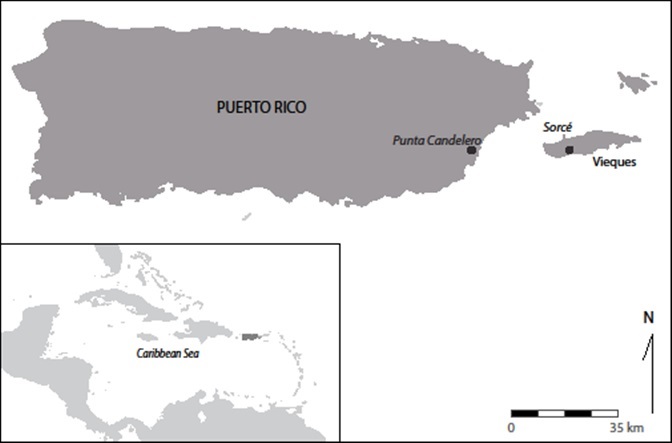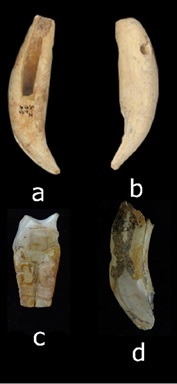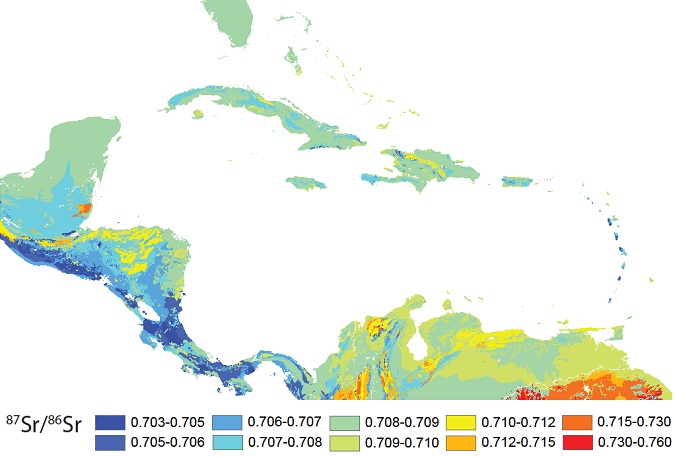Research project
Biogeochemical Biographies
A multiple isotope approach to human-animal dynamics in the Lesser Antilles across the historical divide
- Duration
- 2013 - 2017
- Contact
- Jason Laffoon
- Funding
-
 NWO- Island Networks
NWO- Island Networks
- Partners
Geology and Geochemistry Cluster of the Faculty of Earth and Life Sciences, VU University Amsterdam
Short Abstract
Investigating transformations in patterns of human and animal mobility and exchange in the Lesser Antilles through multi-isotopic analyses of skeletal remains.
Research question
What was the nature of human and animal mobility in the pre-colonial and early colonial period Lesser Antilles and how did these change over time?
Introduction
This research project will investigate transformations in patterns of human and animal mobility and exchange in the Lesser Antilles between AD 1000-1800. Research questions concern the impacts of broader socio-cultural change on: 1) the life histories of individual persons (who, when, from where, age at migration, and changing dietary patterns), and 2) the life histories of individual objects (the origin, distribution, and deposition of exotic animal remains).
Background
The Lesser Antilles were characterized by a high degree of social, ethnic, biological, and cultural diversity during the pre-colonial era. The history and context of plurality in this region was profoundly transformed after 1492, not only through large-scale migration(s) of Europeans, Africans, and Amerindians from diverse origins but also through the widespread ecological impacts induced by the introductions of non-native plant and animal species. Although the broad strokes of the histories of these interactions have been drawn, the specific nature of the variable impacts of these interactions on individuals and smaller scale social groups remains unexplored.

Previous Research
Recent multi-disciplinary research, including multiple isotope analyses of archaeological skeletal remains, by the Leiden Caribbean Research Group in collaboration with the VU University Amsterdam has revealed complex and diverse patterns of human and animal mobility existed amongst the various pre-colonial communities of the Caribbean that varied significantly over space and time. Moreover, individuals originating from different environments and geographic settings not only possess distinct cultural traditions but they also often adapt their practices and behavior to local cultural and ecological conditions, and can initiate changes in existing practices, such as food-ways. In fact, transformations in human dietary patterns are one of the most profound and truly global impacts of the ‘Columbian Exchange’.
Scientific Relevance

Multiple isotope analyses of human and remains are increasingly applied in archaeological studies. Additionally, recent research has revealed that 1) various species of non-endemic animals of mainland origin; and 2) various artefacts/objects manufactured from their remains, such as jaguar and peccary animal tooth pendants were introduced into and widely traded throughout the Antilles by Amerindians in the late pre-colonial period. These patterns are particularly suitable for further investigation via the application of the latest methods and techniques in multi-isotope analyses embedded within an integrated archaeometric and bioarchaeological approach. To date, integrated approaches using multiple isotope analysis have been generally under-utilized to address such research questions in the Caribbean despite their enormous potential for assessing patterns of human and animal mobility at varying temporal and spatial scales.
Materials and Methods
As a postdoctoral researcher, Dr. Jason Laffoon will apply multiple isotopic analyses (C-N-O-Sr) of archaeological human and animal remains to examine transformations in 1) patterns of human mobility and diet, and 2) patterns of human-mediated animal mobility and exchange across the historical divide. Primary foci are: 1) the integration of multiple isotope analyses to individual human and animal skeletal remains; 2) serial sampling of different skeletal materials (enamel, dentine, bone) from the same individuals; 3) expansion of these applications to individuals and burial populations spanning the late pre-colonial and early colonial periods.

Results and Conclusions
The results of the first case study have already been published (Laffoon, Jason E., et al. (2014): "Long-distance exchange in the precolonial Circum-Caribbean: A multi-isotope study of animal tooth pendants from Puerto Rico." Journal of Anthropological Archaeology 35:220-233), and another article summarizing the results of a second case study focused on sourcing animal artifacts recovered from Los Roques archipelago, Venezuela is in preparation. Preliminary results have also been presented at several international archaeological conferences (ISBA- Basel, 2014; IACA- St. Martin, 2015) and is the focus of an organized session at the upcoming SAA conference (Orlando, 2016). Results to date, indicate complex patterns of movement of humans, animals and animals-artifacts from diverse and sometimes long-distance origins within and between the mainland and island Circum-Caribbean, and both adaptions to and modifications of local ecologies. The final results of this study will also be used in the reconstruction of the archaeological networks in subproject 3 of the broader Island Networks Project.
